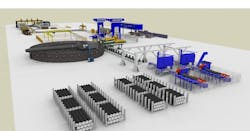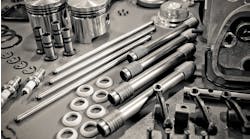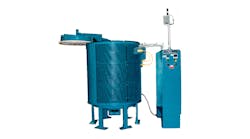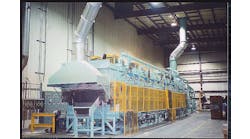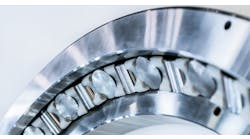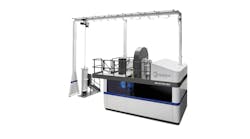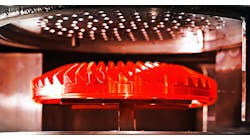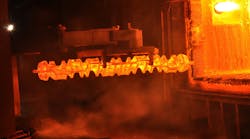Glowing steel billets or preforms are visually striking, and depending on a forger’s experience it may indicate if the material is ready for forming, or that a forged piece is ready for trimming, quenching, and so on. Now, in the information age, there is increasing curiosity to find out what more may be learned about the materials, products, and processes in a standard forging operation.
Viking Analytics, a software developer and a supplier of analytical solutions for predictive operations, has started working with a Swedish forging operation in a data-driven effort to improve product quality.
Bharat Forge Kilsta AB has been a part of India’s Bharat Forge Group since 2005, but the plant at Karlskoga, Sweden, has been forging steel for more than a century, mainly supplying components for commercial vehicle manufacturing. The plant has three hydraulic press lines (2,500 through 16,000 metric tons), producing parts from 2 to 250 kg at a rate of 170,000 mtpy.
Over the months ahead, Viking Analytics reports it will prepare a detailed assessment of data collected by sensors installed in an induction furnace used to heat steel rods prior to forging crankshafts and front-axle beams. The development is the first part of a regional manufacturing effort to apply AI to improve performance and competitiveness, involving not only Bharat Forge Kilsta and Viking Analytics, but steelmaker Ovako, truck builder Volvo, and several research institutes.
In preparation for forging, steel is heated according to the forming requirements for different steel grades and finished products. If anything happens to slow or disrupt production down the line, the furnace must be adjusted to keep the metal at a constant temperature. In the present operation, the furnace is monitored and manually adjusted, which according to Viking Analytics sometimes results in variations in the proper temperature level, variations based on human miscalculation or misjudgment.
The Viking Analytics project will draw on the extensive volume of data drawn from furnace sensors to inform an artificial intelligence (AI) program that will control the furnace temperature settings automatically.
As the developer repots, its data scientists have developed a digital twin that simulates the heating process and tests whether adding more sensors or changing certain parameters can influence the quality of the data that will be used for machine learning. Understanding the capabilities of the currently available system is an important first step for introducing analytics to industrial operations, like forging.
“Just collecting data is not enough,” explained Stefan Lagerkvist, Viking Analytics CEO. “A data-readiness assessment shows if it is ready to be used and what conclusions companies will be able to draw from it, as well as suggesting changes or improvements.”
While the specific goal of the effort is to increase plant productivity and product quality, it’s also expected that the deeper understanding of the data will help to reduce scrap material and optimize the energy consumed by the furnace. These factors will help Bharat Forge Kilsta improve its efforts to achieve sustainability at the plant.
“For us, this is the first project where we apply artificial intelligence in our production,” according to production manager Hans Lindbäck. “Our ambition is to apply similar solutions also in other production processes.”

